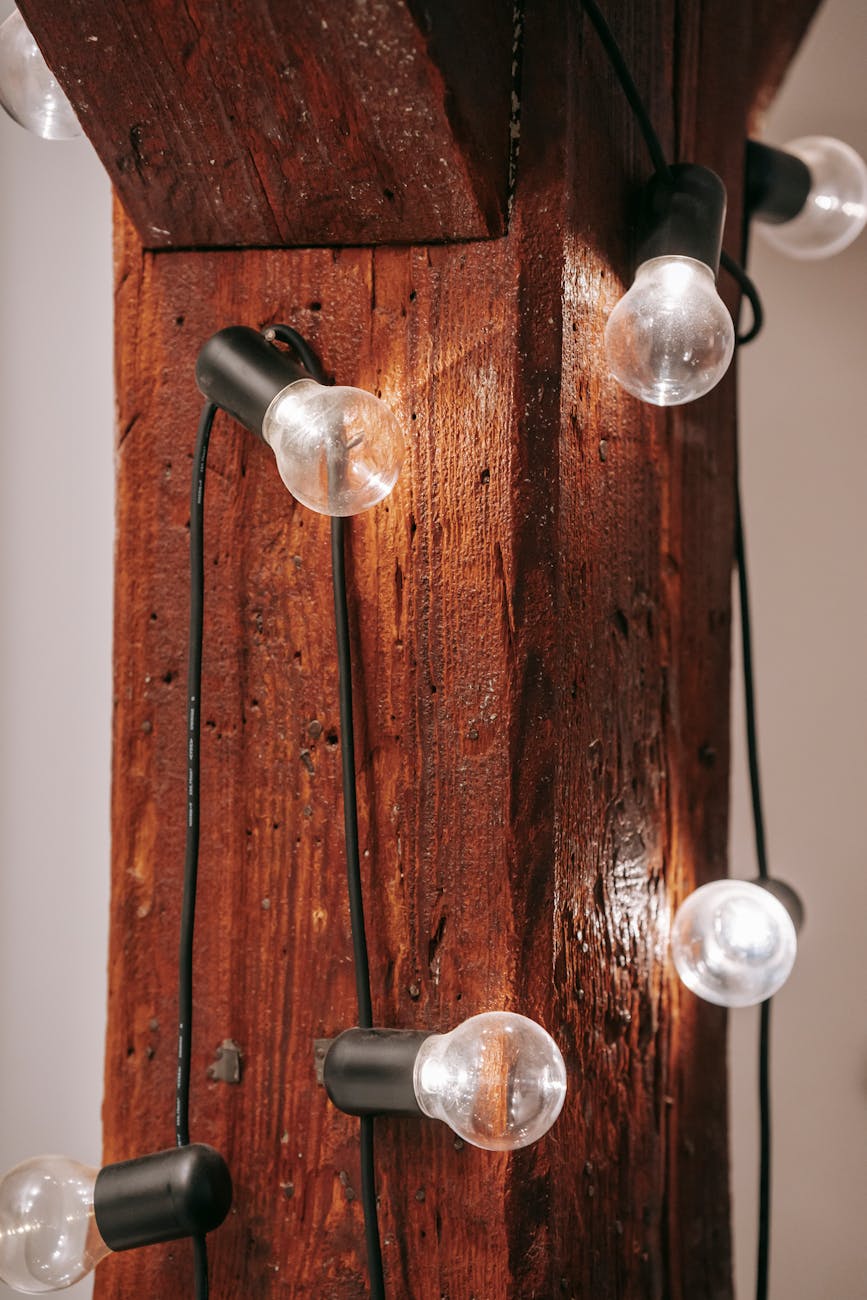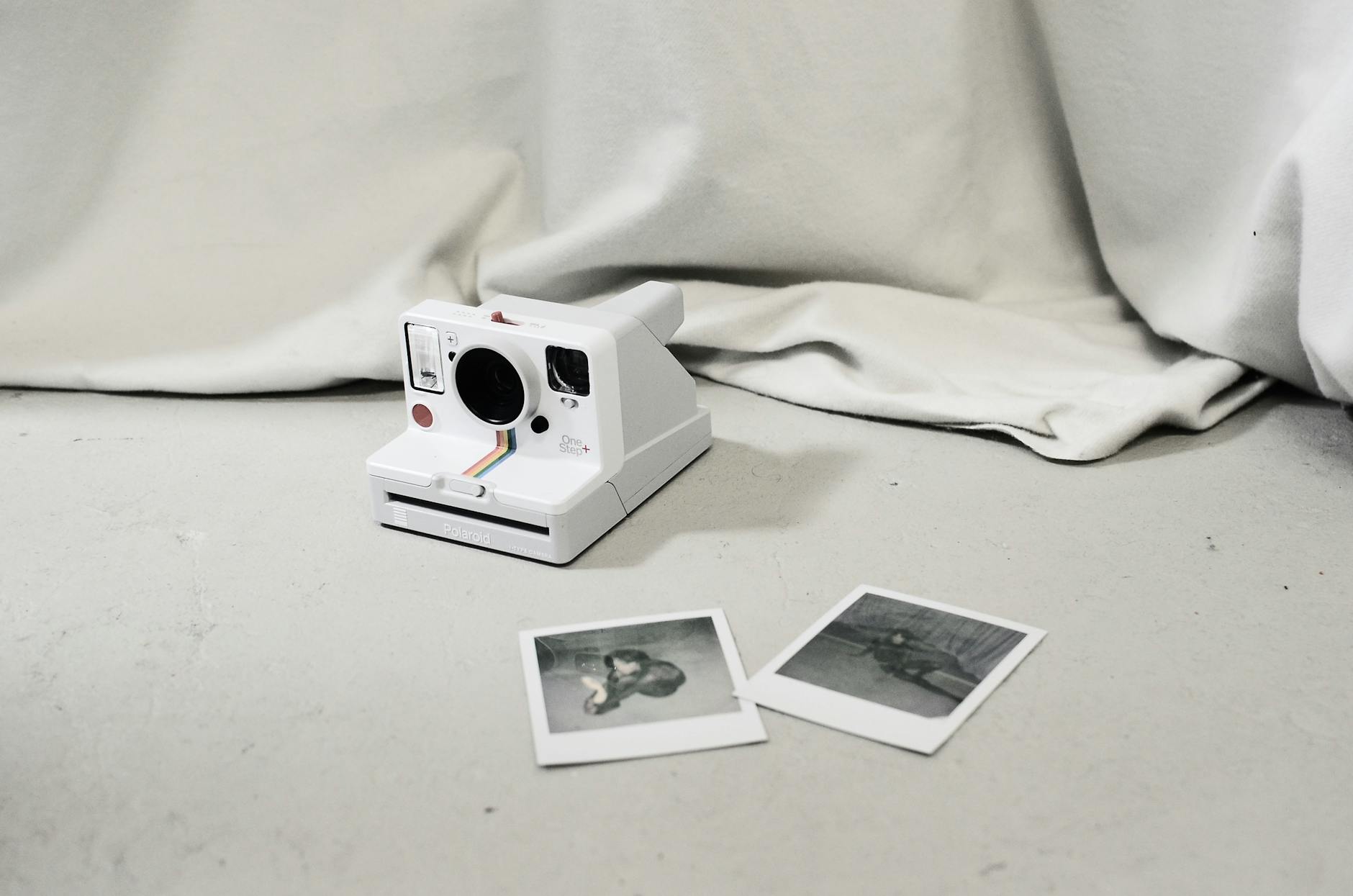Flash floods can strike without warning, causing extensive damage and putting your family at risk. As homeowners, it’s essential to be proactive with preventing home flood damage and ensuring emergency flood preparedness at home. In this comprehensive guide, we will walk you through a series of home flood safety tips designed to safeguard your property and loved ones from the devastating effects of flash floods. From assessing your home’s flood risk to installing sump pumps and backflow valves, and even improving drainage around your property, these practical steps will help you stay ahead of potential hazards. With the right precautions in place, you can protect your home and family effectively against the unexpected onslaught of flash floods at home. Stay informed and prepared by following our expert advice, and rest assured knowing you’re taking the necessary steps to secure your home and its occupants.
Understanding Flash Floods and Their Causes
Flash floods are sudden, intense overflow of water that generally happens within a short time—usually less than six hours—due to heavy rainfall, rapid snowmelt, or dam breaks. They can occur with little to no warning, making it crucial to understand their causes to implement effective home flood safety tips.
Causes of Flash Floods
- Heavy Rainfall: Prolonged or intense rain that the ground cannot absorb quickly enough leads to flash floods. Urban areas with more concrete and less vegetation are particularly vulnerable.
- Rapid Snowmelt: An abrupt rise in temperature can cause a quick meltdown of accumulated snow, resulting in significant water overflow.
- Dam or Levee Breaks: Structural failures of these controlling mechanisms can unleash large volumes of water suddenly.
- Ice Jams: Accumulation of ice in rivers can create blockages that lead to sudden release of water when the ice breaks.
Vulnerable Areas
To help you assess your home’s flood risk, be aware of the following areas that are typically vulnerable:
- Low-lying Areas: Regions below sea level or along rivers and streams.
- Urban Areas: Cities with poor drainage systems.
- Coastal Areas: Places near oceans or seas.
- Near Dams or Levees: Homes located close to these structures.
Helpful Tips
Consider these home flood safety tips to better prepare:
- Elevate: Raise essential appliances above potential flood levels.
- Seal: Use waterproof materials to seal cracks in walls and foundations.
- Drainage: Ensure good drainage systems around your home to direct water away.
- Backflow Valves: Install these to prevent sewer backups.
| Cause | Effect | Precaution |
|---|---|---|
| Heavy Rainfall | Rapid water accumulation | Improve landscaping and install trenches. |
| Rapid Snowmelt | Sudden influx of water | Build barriers and divert water flow. |
| Dam Failures | Instant large water release | Monitor conditions and follow evacuation plans. |
| Ice Jams | Obstructed water flow | Stay informed, use sandbags. |
Understanding the causes of flash floods is pivotal to preventing home flood damage. By taking these steps, you can greatly improve your emergency flood preparedness at home.

Photo by Charlotte May
Assess Your Home’s Flood Risk
Understanding the potential threat of flash floods at home is essential for safeguarding your property and loved ones. The first step in protecting your home is to assess its flood risk. Here’s how you can do this effectively:
Conduct a Flood Risk Assessment
To determine your home’s vulnerability to floods, you should evaluate several key factors:
- Location: Is your property near rivers, lakes, or in a historically flood-prone area?
- Elevation: Homes built on lower ground are more susceptible to flooding.
- Local Drainage Systems: Check if the local drainage is adequate and well-maintained.
- Previous Flood History: Research the flood history of your locality.
Useful Tools and Resources
You don’t have to do it alone. Utilize these resources for more accurate flood risk evaluations:
| Resource | Description |
|---|---|
| FEMA Flood Maps | Provides detailed flood risk maps and data. |
| Local Government | Contact local planning or zoning offices for history and risk information. |
| Insurance Companies | Often provide flood risk assessments for properties. |
| Online Risk Tools | Websites like Flood Factor offer free flood risk evaluations. |
Professional Inspections
Engage a professional to assess your home’s flood risk. They can provide expert insights and suggest home flood safety tips and emergency flood preparedness at home, ensuring you are better equipped to tackle potential threats.
How to Mitigate Risk
After assessing, take necessary measures to prevent home flood damage:
- Elevate critical systems and appliances.
- Seal cracks and gaps in your foundation and walls.
- Install sump pumps and backflow valves.
Comprehensive Planning
Risk assessment isn’t just about identifying vulnerabilities. It’s also about planning and mitigating. Develop a robust plan based on your findings to protect your home and ensure you and your family are prepared.
By systematically evaluating your flood risk and taking preventive actions, you can significantly reduce the impact of flash floods at home. Start your assessment today and prioritize safety and preparedness.
Install Sump Pumps and Backflow Valves
Ensuring that your home has robust systems to tackle potential floods is crucial. Flash Floods at Home can strike unexpectedly, so it’s essential to be prepared. Two of the most effective measures are installing sump pumps and backflow valves. Below, you’ll find essential Home Flood Safety Tips for these installations.
What Are Sump Pumps and Why They’re Necessary
A sump pump is a device installed in the lowest part of your home, such as the basement or crawlspace, that helps keep the area dry by automatically pumping out accumulated water.
-
Types of Sump Pumps:
- Pedestal Sump Pumps: Easier to service and have a longer lifespan.
- Submersible Sump Pumps: Quieter and don’t take up floor space.
-
Key Benefits:
- Prevents structural damage.
- Reduces mold and mildew risks.
- Minimizes the chance of flooding during heavy rains.
Installing Sump Pumps
A professional installation is highly recommended for sump pumps. However, if you opt to do it yourself, follow these steps:
- Choose the Right Location: Find the lowest point in your basement.
- Dig a Pit: The hole should be deeper and wider than the sump pump.
- Install the Pump: Place the pump in the pit and ensure it’s level.
- Install Discharge Pipes: These pipes will carry water away from your home.
Understanding Backflow Valves
Backflow valves are designed to prevent water from municipal sewers from backing up into your home.
-
Types of Backflow Valves:
- Automatic Flood Gates: Close automatically when needed.
- Manual Gate Valves: Require manual operation but provide more control.
-
Key Benefits:
- Protects against sewer backups.
- Ensures water flows only in one direction.
Installing Backflow Valves
- Hire a Licensed Plumber: Proper installation is crucial for effectiveness.
- Locate the Main Sewer Line: The valve needs to be placed correctly for optimal performance.
- Regular Maintenance: Ensure the valve is working correctly through annual check-ups.
Comparison Table
| Feature | Sump Pumps | Backflow Valves |
|---|---|---|
| Purpose | Pump out water | Prevent sewer backflow |
| Location | Lowest part of home | Main sewer line |
| Types | Pedestal, Submersible | Automatic, Manual |
| Maintenance | Annual checks | Regular inspections |
By taking these precautions, you drastically reduce the risk of Preventing Home Flood Damage. Remember, Emergency Flood Preparedness at Home is vital, and being proactive can save you from significant stress and financial burden.
Taking steps to install sump pumps and backflow valves early can offer peace of mind and robust protection against unexpected floods.
Seal Cracks and Gaps in Walls and Foundations
When it comes to taking quick precautions to take against flash floods at home, sealing cracks and gaps in your walls and foundations is a fundamental step. These small openings may seem insignificant, but they can provide easy entry points for water during intense rainfall or flooding events, leading to extensive property damage and costly repairs. Follow these home flood safety tips to secure your home:
Why Sealing is Crucial
Sealing cracks and gaps prevents water infiltration which can weaken structures and promote mold growth. This simple yet effective measure helps in preventing home flood damage significantly.
Steps to Seal Cracks and Gaps
-
Inspect Your Home:
- Begin with a thorough inspection of your home’s walls and foundation. Look for visible cracks, gaps, or any signs of wear and tear.
-
Clean the Area:
- Use a wire brush to remove loose debris and dirt from the cracks and gaps to ensure a strong sealant bond.
-
Choose the Right Sealant:
- Use a high-quality, water-resistant sealant or epoxy. Ensure it is suitable for the type and size of the cracks.
-
Apply the Sealant:
- Fill each crack and gap completely with the chosen sealant. Use a caulking gun for precise application. Smooth it out for an even finish.
-
Allow Time to Cure:
- Follow the manufacturer’s instructions for curing time. Ensure the sealant sets and hardens properly.
Summary of Tools and Steps
| Task | Tools Needed | Tips |
|---|---|---|
| Inspect | Flashlight, ladder | Check both interior and exterior |
| Clean | Wire brush, vacuum | Clean thoroughly for best results |
| Seal | Sealant, caulking gun | Use water-resistant sealant |
| Curing | N/A | Allow ample time to harden |
By proactively sealing cracks and gaps in walls and foundations, you fortify your home against water intrusion, mitigating damage during emergency flood preparedness at home. This small step can lead to significant savings, ensuring your home remains dry and safe even in severe weather conditions.
By adhering to these steps, you’ll be better equipped to handle the unpredictable nature of flash floods, protecting both your home and loved ones.
Elevate Electrical Appliances and Systems
When preparing for potential flash floods at home, one crucial precaution is to elevate electrical appliances and systems. This simple yet effective measure can significantly mitigate damage and ensure safety during a flood event. Here’s a step-by-step guide to help you get started:
Step-by-Step Guide
-
Identify Vulnerable Items: Survey your home to identify electrical appliances and systems that are close to the ground. Common items include:
- Washers and dryers
- Refrigerators
- Water heaters
- HVAC units
- Electrical outlets and wiring
-
**Elevate **Appliances: Raise these appliances at least one foot above the anticipated flood level. Use sturdy platforms or cinder blocks to ensure stability.
-
Relocate Wiring: If possible, move electrical wiring to higher positions within the walls. This minimizes the risk of electrical short circuits and reduces potential hazards.
Table for Elevation Tips
| Item | Recommended Action |
|---|---|
| Washer/Dryer | Use heavy-duty platforms or blocks |
| Refrigerator | Place on a sturdy, elevated base |
| Water Heater | Elevate with a professional’s help |
| HVAC Unit | Raise on a stable platform; consult an expert |
| Outlets/Wiring | Re-route to higher positions in walls |
More Tips
- Professional Help: For complex systems like HVAC units or water heaters, consult a professional to ensure proper installation and safety.
- Waterproofing: Consider adding waterproof casings for electrical equipment to provide an extra layer of protection.
- Label Breakers: Clearly label your circuit breakers, so you can quickly turn off the power if flooding is imminent.
Why It Matters
Elevating electrical appliances and systems not only mitigates significant home flood damage but also ensures the safety of all residents by reducing the risk of electrical hazards. It’s a proactive step in your home flood safety tips arsenal, making your home more resilient against unforeseen flash floods.
By following these guidelines, you’re bolstering your emergency flood preparedness at home, ensuring that one of the most critical components—your electrical systems—remain safeguarded against unexpected floodwaters.

Photo by Skylar Kang
Create a Family Emergency Plan
When facing flash floods at home, having a well-constructed family emergency plan can be the difference between safety and chaos. Here’s how you can ensure that your family is prepared:
Establish a Communication Strategy
- Contact Information: Create a list of all family members’ contact details, including cell phone numbers, email addresses, and work contacts.
- In-Case-of-Emergency (ICE) Contacts: Designate an in-case-of-emergency contact who lives outside the flood-prone area.
- Meeting Points: Identify two safe meeting points—one close to home and another outside the immediate neighborhood.
Plan Evacuation Routes
It’s crucial to have multiple exit routes planned.
- Primary and Secondary Routes: Identify multiple routes in case primary paths are impassable.
- Practice Drills: Regularly conduct family evacuation drills to ensure everyone knows the routes and procedures.
Assemble Emergency Kits
Prepare kits that you can quickly grab in case of an evacuation.
- Essential Items: Include necessities like water, non-perishable food, medications, and important documents.
- Special Needs: Account for family members with special needs or pets.
Assign Roles and Responsibilities
Ensure everyone knows their part in an emergency.
- Adults: Assign tasks like gathering the emergency kit, securing the home, and directing the evacuation.
- Children: Instruct children on how to stay safe and whom to contact if they get separated.
Stay Informed
Understanding the situation can greatly help in making quick decisions.
- Weather Alerts: Subscribe to weather alert services for up-to-date information.
- Communication Devices: Keep a charged cell phone and backup batteries handy.
By following these home flood safety tips, you can significantly enhance your family’s readiness. Remember, preparing in advance with a strong family emergency plan can save lives and reduce anxiety in the face of flash floods at home.
| Items Needed | Purpose |
|---|---|
| Flashlight | Visibility in the dark |
| First Aid Kit | Immediate medical aid |
| Bottled Water | Hydration during power outages |
| Non-Perishable Food | Sustenance during emergency |
By adhering to these strategies, you are not just preparing for emergency flood preparedness at home but also ensuring the well-being of your loved ones.
Stock Emergency Supplies and Equipment
Being well-prepared for flash floods at home involves having essential supplies and equipment readily available. By stocking up on these items, you can ensure your family’s safety and comfort during a flood event. Here’s a well-organized list of critical supplies to include in your emergency kit:
Essential Emergency Supplies:
- First Aid Kit: Include bandages, antiseptic wipes, adhesive tape, scissors, tweezers, and necessary medications.
- Water: Store at least one gallon of water per person per day for at least three days.
- Non-Perishable Food: Stock up on canned goods, energy bars, and high-protein snacks that don’t require refrigeration.
- Flashlights and Batteries: Ensure you have multiple flashlights and a good supply of spare batteries.
- Blankets and Warm Clothing: Keep enough blankets and warm clothing to stay dry and warm.
- Portable Phone Charger: A fully charged portable charger can be a lifesaver during power outages.
- Multi-Tool and Basic Tools: Include a multi-tool, wrench, and pliers for turning off utilities if necessary.
Additional Equipment for Home Flood Safety:
- Battery-Powered or Hand Crank Radio: To stay informed with weather alerts and warnings.
- Whistle: Use to signal for help if needed.
- Dust Masks: To filter contaminated air.
- Plastic Sheeting and Duct Tape: For sealing windows and doors to prevent water entry.
Quick Reference Table for Emergency Supplies:
| Item | Purpose |
|---|---|
| First Aid Kit | Treat injuries and prevent infections |
| Water | Hydration for at least three days |
| Non-Perishable Food | Sustenance without refrigeration |
| Flashlights and Batteries | Lighting during power outages |
| Portable Phone Charger | Keeping mobile devices operational |
| Battery-Powered Radio | Staying informed about weather and evacuation alerts |
| Whistle | Signaling for assistance |
By stocking emergency supplies and equipment, you can significantly increase your readiness in the face of a flood. Remember, preventing home flood damage starts with thorough preparation. Don’t wait until the last minute; ensure you have your supplies well in advance. This will provide you peace of mind and enhance your emergency flood preparedness at home.
Utilize Sandbags and Flood Barriers
One of the most effective measures you can take to protect your home from flash floods is to utilize sandbags and flood barriers. These tools can be lifesavers when it comes to preventing water from entering your home, and they are relatively easy to set up. Here’s a quick guide on how best to use them:
The Importance of Sandbags
Sandbags act as a barrier to redirect water and river flows away from your home’s foundation:
- Cost-effective: They are inexpensive and can be filled with sand or soil.
- Flexible: You can place them where needed to block floodwater paths.
- Easy to store: When not in use, empty bags take up minimal storage space.
Choosing Flood Barriers
Flood barriers offer a more permanent and reusable solution:
- Durable: Made from robust materials, these barriers withstand multiple uses.
- Quick setup: Many flood barriers are designed for rapid deployment.
- Reusable: Unlike sandbags, these barriers can be used repeatedly.
Steps to Deploy Sandbags and Flood Barriers
- Identify Vulnerable Areas: Determine which parts of your home are most susceptible to flooding.
- Positioning: Place sandbags and barriers around doors, windows, and any potential entry points.
- Layering: Stack sandbags in a pyramid formation to ensure stability.
- Maintenance: Check regularly to ensure they remain intact and well-positioned.
Table: Key Tips for Using Sandbags and Flood Barriers
| Tip | Description |
|---|---|
| Preparation | Store sandbags and barriers before the rainy season starts. |
| Waterproof Seals | Ensure bags and barriers are tightly sealed to prevent leaks. |
| Emergency Plan | Incorporate these tools into your emergency flood preparedness. |
| Community Coordination | Work with neighbors to create a collective flood defense. |
Additional Resources
For effective deployment of these protective measures, you might also want to consider local government guides and resources, which often provide detailed instructions on assembling and placing these barriers.
By incorporating sandbags and flood barriers into your home flood safety tips, you can significantly minimize the damage from flash floods at home. Moreover, combining these physical defenses with other preventive strategies can make your home highly resilient to water damage.

Photo by Skylar Kang
Improve Drainage Around Your Home
Proper drainage systems are essential to safeguard your home from the devastating effects of flash floods. Improving drainage around your home can significantly reduce the risk of water damage and help you feel more secure during heavy rainfall. Here are practical steps to enhance your home’s drainage and minimize the impact of floods.
Evaluate Existing Drainage Systems
Start by assessing your current drainage infrastructure. Check for blocked or damaged gutters, downspouts, and drains. Make sure they are clean and functioning correctly to handle the additional water from heavy rains.
Install French Drains
French drains are an effective way to redirect water away from your property. These underground drainage systems consist of a perforated pipe surrounded by gravel, which allows water to be absorbed and funneled away from your home.
Landscape and Grading
Ensure that the land around your house slopes away from the foundation. Proper grading prevents water from pooling near your home, which can lead to leaks and flooding. Incorporating landscaping techniques like swales and rain gardens can also help manage excess water.
Use Gutter Extensions
Extend your gutters to direct the flow of rainwater far from your foundation. These extensions are inexpensive and can play a critical role in preventing home flood damage.
### Comparison of Drainage Solutions
--------------
| Solution | Cost | Effectiveness |
|--------------------|-------------|----------------|
| French Drains | $$ | High |
| Grading & Landscaping | $ - $$$ | High |
| Gutter Extensions | $ | Medium |
--------------
Install a Dry Well
Consider installing a dry well, which is a structure designed to collect and slowly release stormwater into the ground. This helps to manage overflow during heavy rains.
By focusing on these strategies, you improve your home’s resistance to flash floods, ensuring a safer living environment. Remember that maintaining a good drainage system is part of emergency flood preparedness at home. Prioritize these adjustments to protect your living space efficiently.
Purchase Flood Insurance
In the face of increasingly unpredictable weather patterns, purchasing flood insurance is an essential step toward ensuring your home’s long-term safety and financial security. Here, we’ll cover key points to consider when adding this critical layer of protection for your property.
Why Flood Insurance is Crucial
Standard homeowner’s insurance typically does not cover damages caused by flash floods at home. Without this specialized policy, you might face steep out-of-pocket costs should a storm surge, heavy rain, or melting snow bring water damage to your property.
How to Get Started
Purchasing flood insurance involves understanding your home’s specific needs and finding the right coverage. Follow these steps to make an informed decision:
- Assess Risk: Determine your susceptibility to flood damage by consulting FEMA flood maps or contacting local municipal authorities.
- Research Providers: Explore different insurance companies offering flood insurance policies and compare their coverage.
- Understand the Coverage: Ensure the policy includes protection for both the structure of your home and its contents.
- Compare Costs: Obtain quotes from multiple providers to find the best value for your coverage needs.
Coverage Options
| Coverage Type | Details |
|---|---|
| Building Property | Covers the physical structure, including foundation, electrical and plumbing systems. |
| Personal Property | Includes furniture, electronics, and personal belongings within the home. |
Key Benefits
- Financial Protection: Shields you from hefty repair and replacement costs.
- Peace of Mind: Reduces stress, knowing that your home is safeguarded.
- Compliance: Meets mortgage requirements if you live in a designated flood zone.
Quick Tips
- Act Early: Flood insurance policies usually have a 30-day waiting period before they take effect. Don’t wait until a storm is imminent.
- Document Everything: Maintain an updated record of your home’s inventory to streamline any claims process.
By integrating home flood safety tips like purchasing flood insurance, you contribute significantly to emergency flood preparedness at home. This proactive approach minimizes potential damages and provides a solid foundation for preventing home flood damage. For utmost security, continually review and update your plan and ensure your policy aligns with your current needs.
Keep Important Documents Safe
When it comes to Flash Floods at Home, keeping your essential documents safe is critical. Here are some Home Flood Safety Tips to help you safeguard important papers against water damage:
1. Make Digital Copies
Digital copies are your best insurance against loss. Scan important documents and store them securely:
- On cloud services (Google Drive, Dropbox)
- On external hard drives or USBs, stored in waterproof containers
2. Use Waterproof Containers
For physical documents, invest in waterproof containers:
- Choose containers with airtight seals
- Label each container for easy identification
3. Prioritize Essential Documents
Know which documents to protect:
- Personal identification (passports, birth certificates)
- Legal papers (property deeds, wills, insurance policies)
- Financial records (bank statements, tax returns)
4. Location, Location, Location
Store your important containers strategically:
- Above ground level
- In an easily accessible area for quick evacuation
5. Keep a Backup Away from Home
As part of Emergency Flood Preparedness at Home:
- Store copies with a trusted friend or family member
- Utilize a safety deposit box at a bank
Here’s a quick table to summarize these steps:
| Step | Action | Benefit |
|---|---|---|
| Make Digital Copies | Scan and store online | Access anywhere, anytime |
| Use Waterproof Containers | Airtight containers for physical storage | Protects against water |
| Prioritize Essential Docs | Identify key papers to safeguard | Ensures critical papers safe |
| Strategic Storage | Store above ground level and easy to reach areas | Quick access during floods |
| Backup Away from Home | Place copies with trusted individuals or in a bank | Extra layer of protection |
By following these Preventing Home Flood Damage tips, you can ensure that your critical documents remain safe, even when disaster strikes. Keeping important documents secure is not just about convenience; it’s about maintaining your peace of mind during emergencies.
Stay Informed with Weather Alerts and Warnings
Being proactive can significantly reduce the risks and damages caused by flash floods at home. Staying informed is crucial, and here’s how you can ensure you and your loved ones are always ahead of the storm.
Use Technology to Your Advantage
In today’s digital age, there are numerous tools available to help keep you updated with weather alerts:
- Weather Apps: Download reliable weather apps on your smartphone. These apps often provide real-time updates and can be lifesavers when it comes to emergency flood preparedness at home.
- Emergency Notification Systems: Sign up for local emergency notification systems that send alerts via SMS, email, or automated calls.
- Social Media: Follow reputable weather stations, local news channels, and emergency services on platforms like Twitter and Facebook. They often post timely updates about impending weather conditions.
Stay Connected
Ensuring constant connectivity can make a huge difference during emergency situations:
- Keep your mobile devices fully charged.
- Invest in portable chargers or power banks.
- Have a battery-operated or hand-crank weather radio as a backup.
Understand Alert Types
Knowing the differences between weather warnings can help you respond appropriately:
| Alert Type | Description |
|---|---|
| Watch | Conditions are favorable for severe weather such as flash floods. Stay vigilant and prepare. |
| Warning | Severe weather conditions are imminent or already occurring. Take immediate safety actions. |
| Advisory | Weather conditions could inconvenience or threaten safety. Be cautious and stay updated. |
Practical Steps to Take
When a flood watch or warning is issued:
- Review your Family Emergency Plan, ensuring everyone knows their roles and actions.
- Move essential items and elevate electrical appliances and systems to safer, higher grounds.
- Utilize sandbags and flood barriers to offer additional protection to your home’s entrances.
- Double-check that your emergency supplies and equipment are easily accessible.
By staying informed with weather alerts and warnings, you can act swiftly and effectively, reducing potential home flood damage. Be sure to regularly update your systems and educate your family on the importance of readiness.
Frequently Asked Questions
What are the first steps to take if there’s a flash flood warning in my area?
If a flash flood warning is issued for your area, the first steps you should take include staying informed by listening to weather alerts and news. Move to higher ground immediately and avoid walking or driving through floodwaters. Ensure that your family members, pets, and important documents are safe and accessible.
How can I prepare my home for potential flash floods?
Preparing your home for potential flash floods involves creating an emergency kit with essentials like water, food, medications, and first-aid supplies. Additionally, ensure that your home’s gutters and storm drains are clear of debris to facilitate proper water flow. Sandbags can help divert water away from your home, and waterproofing your basement can prevent water damage.
What should I include in an emergency kit for flash floods?
An emergency kit for flash floods should include essentials such as bottled water, non-perishable food items, a flashlight with extra batteries, a first-aid kit, necessary medications, important documents in waterproof containers, and a battery-operated radio to stay updated on emergency alerts. It’s also wise to include basic tools and supplies to secure your home and aid in a quick evacuation if needed.
How can I stay safe during a flash flood?
During a flash flood, prioritize your safety by avoiding low-lying areas and moving to higher ground. Do not attempt to drive through floodwaters, as just six inches of moving water can sweep a vehicle away. Stay indoors and away from windows if possible, and continue to monitor local weather updates and emergency notifications until the danger has passed.


